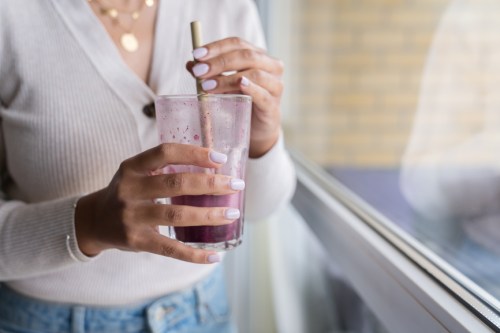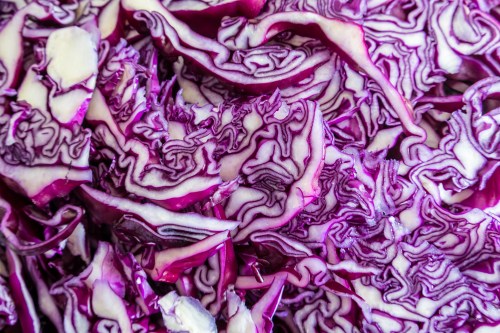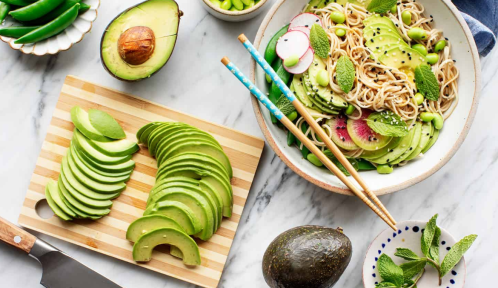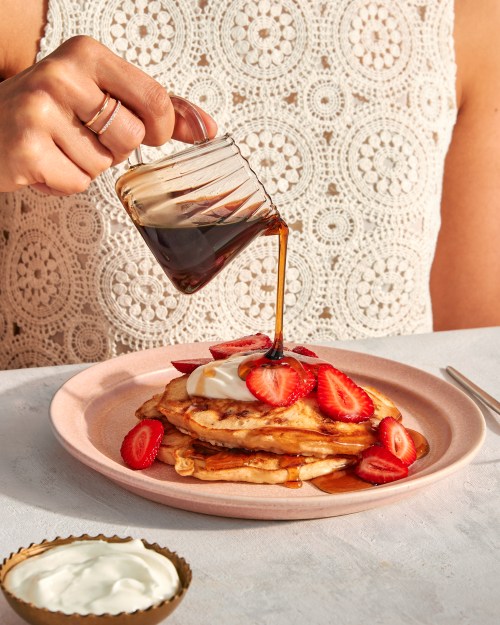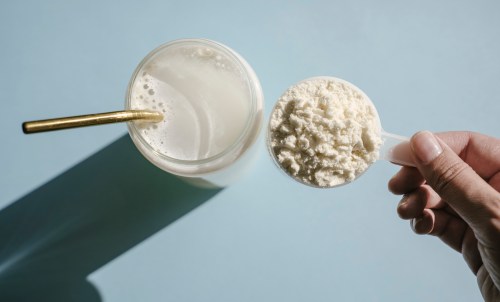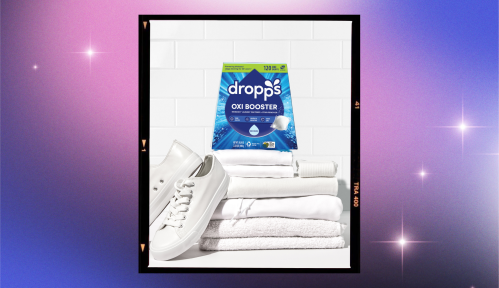Here’s an explicative-worthy stat for you: An estimated 95 percent of Americans don’t eat enough of the F-word nutrient known as fiber. While you can begin to close the fiber gap by eating more black beans, oats, and Brussels sprouts, you can also drink the oh-so-important carbohydrate if you know what to add to a blender. That’s why we asked dietitian registered dietitian Toby Smithson, RDN, a diabetes lifestyle expert, to dream up a high-fiber smoothie formula you can reference whenever you need a little more of the nutrient in your life.
Experts in This Article
Toby Smithson, MS, RDN, CDE is a registered dietitian nutritionist (RDN) and certified diabetes care and education specialist (CDCES).
Before we get down to blending, a quick note on why fiber is important in the first place. “Fiber is a carbohydrate that our digestive system can’t breakdown,” explains Smithson. “It helps steady blood sugar; lower cholesterol levels when you include soluble fiber; helps lower blood pressure; increases the frequency for bowel movements; and increases the absorption of minerals in your intestinal tract and increases satiety—which means it helps you feel fuller.” (FYI: Insoluble fiber is the leftover bits of fruits and veggies that bulk up your stool and make your number twos a little bit firmer, while soluble fiber gets its name from the fact that it’s, well, soluble in water.)
Generally speaking, you should be eating about 14 grams of fiber per 1,000 calories eaten. So (again, in general), women should eat about 25 grams of fiber per day, while men should eat about 38 grams. Once you turn 50, that recommendation drops down to 21 grams and 30 grams, respectively.
Fiber is best consumed throughout the day rather than in a single meal, according to Smithson. “Bulking up does not mean to consume all of the fiber in one sitting. Slow and steady is the most beneficial for adding more bulk for your gastrointestinal system,” she says. So while you can check off a good amount of your fiber quota in a smoothie, make sure you’re incorporating other fiber-rich foods—like whole grains and beans—into your meals as well. That said, we’re ready to smoothie.
The only high-fiber smoothie formula you’ll ever need
To make your new go-to smoothie, Smithson recommends combining three items: fiber-rich nuts, berries, and seeds. For texture you can also throw in some rolled oats (which contain about four grams of fiber per half-cup serving), an alt-milk, like macadamia nut milk (which contains about 1 gram of fiber per cup serving), or a protein powder (many of which also contain added fiber). Below, Smithson includes his three favorite smoothie components to throw in the blender.
- Raspberries: “In addition to being the highest fiber fruit, raspberries also provide more than half the recommended daily value of vitamin C and are packed with antioxidants which can help equip your cells to help fight and recover from oxidative stress helping reduce your risk of diabetes, heart disease, and cancer,” she says. A half-cup serving of raspberries contains about four grams of fiber, per the U.S. Department of Agriculture (USDA).
- Almonds: How much time do you have? Almonds have a lot of benefits.”Ounce for ounce, almonds are the tree nut with the most fiber—four grams— and offer six grams of plant protein [per one-ounce serving],” says Smithson. Beyond that, almonds also contain potassium and magnesium, which helps regulate blood pressure and improve blood flow.
- Chia seeds: A one-tablespoon serving of chia seeds packs four grams of fiber, as well as omega-3 fatty acids, antioxidants, and two grams of plant-based protein. “Chia seeds also provide calcium, phosphorus and magnesium, which are helpful in building stronger bones,” says Smithson.
Use the dietitian’s three go-to ingredients and your smoothie will have a minimum of 12 grams of fiber (and that’s not even including the other ingredients you can throw in, like oats or alt-milk). Talk about the breakfast of champions.
To learn more about the gut-boosting benefits of fiber according to an RD, watch this video:
Oh hi! You look like someone who loves free workouts, discounts for cutting-edge wellness brands, and exclusive Well+Good content. Sign up for Well+, our online community of wellness insiders, and unlock your rewards instantly.
Sign Up for Our Daily Newsletter
Get all the latest in wellness, trends, food, fitness, beauty, and more delivered right to your inbox.
Got it, you've been added to our email list.
